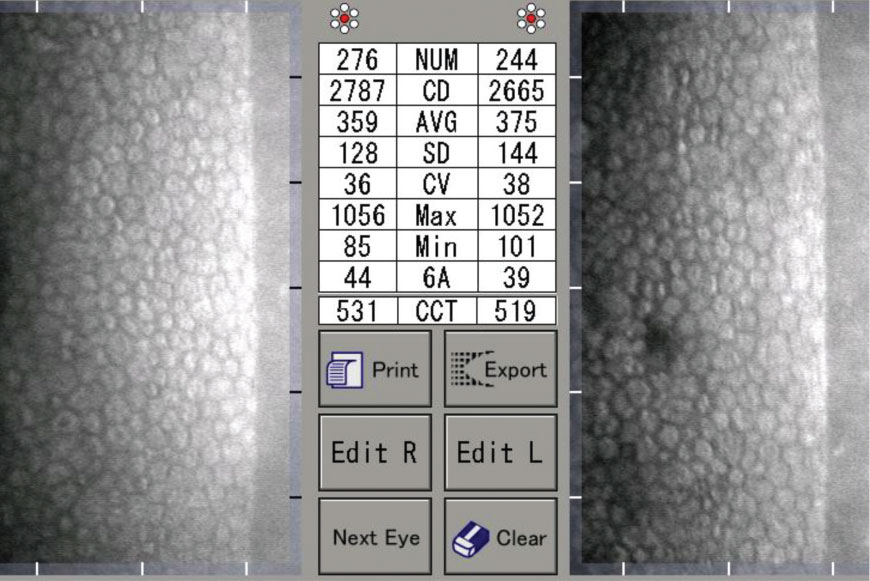 |
|
Children born with a low birth weight had a significantly lower endothelial cell density than those born at or above a normal weight. Photo: Daniel Epshtein, OD. Click image to enlarge. |
Many factors influence a patient's corneal endothelium cell density outside of increasing age and events such as trauma or surgery. A new study on Chinese school children observed that, in addition to central corneal thickness, birth weight appears to be another associated factor of reduced corneal endothelial cells among the younger population.
The researchers analyzed clinical data from 1,171 children aged 82 to 94 months. The mean endothelial cell density of the group was 2,875.3 cells/mm2. After performing a multiple linear regression analysis, the study found that the following factors were associated with endothelial cell density: birth weight, gender and central corneal thickness.
Children born with a low birth weight had a significantly lower endothelial cell density than those born at or above a normal weight, a correlation that hasn’t been explored in previous studies. “The endothelial cell density increased by 36.16 cells/mm2 with birth weight increasing by 1kg,” the researchers noted in their paper in BMC Ophthalmology. "The mean endothelial cell density was 2,785.8 cells/mm2 in the low birth weight group, 2,879.7 cells/mm2 in the normal birth weight group and 2,899.8 cells/mm2 in the high birth weight group,” they wrote.
The researchers also reported that girls had an average endothelial cell density that was approximately 54.4 cells/mm2 higher than boys, suggesting that sex may play a role in this corneal parameter. Unlike birth weight, sex has been associated with endothelial cell density in prior studies.
Another finding of the study was that for every additional 1mm in central corneal thickness, endothelial cell density increased by 0.44 cells/mm2. The researchers noted in their paper that “Controversial results towards the correlation between endothelial cell density and central corneal thickness have been reported by previous studies, including insignificant correlation, negative correlation and positive correlation. This study demonstrated the correlation to be positive.”
Longitudinal studies will be necessary to gauge the association of the two parameters, the authors point out, though they caution it’s important to consider that age-related endothelial cell density changes may skew results if not accounted for.
The researchers conclude that because the positive association between birth weight and corneal endothelial cell density hasn’t been previously observed, more research is needed to develop a prediction model for endothelial cell density in young children and across the life span.
Wang Z, Zuo X, Liu L, et al. Corneal endothelial cell density and its correlation with birth weight, anthropometric parameters, and ocular biometric parameters in Chinese school children. BMC Ophthalmology. August 6, 2022. [Epub ahead of print]. |

